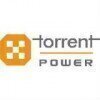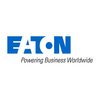Filter interviews by
Wanakbori Thermal Power Station Fire & Safety Supervisor Interview Questions and Answers
Wanakbori Thermal Power Station Fire & Safety Supervisor Interview Experiences
1 interview found
I applied via AmbitionBox and was interviewed in May 2024. There was 1 interview round.
(2 Questions)
- Q1. What is fire ?
- Ans.
Fire is a rapid chemical reaction that releases heat, light, and various gases.
Fire is a result of the combustion process, where a fuel source combines with oxygen in the presence of heat to produce flames.
It requires three elements to sustain: fuel, oxygen, and heat.
Examples of fuel sources include wood, paper, gasoline, and natural gas.
Fire can spread rapidly and cause damage to property and harm to individuals if no...
- Q2. How many class in fire ?
- Ans.
There are different classes of fire based on the type of fuel involved.
There are 5 classes of fire: Class A, Class B, Class C, Class D, and Class K.
Class A fires involve ordinary combustibles like wood and paper.
Class B fires involve flammable liquids like gasoline and oil.
Class C fires involve energized electrical equipment.
Class D fires involve combustible metals like magnesium and titanium.
Class K fires involve cook
Interview Preparation Tips
- Fire Fighting
Top trending discussions






Interview questions from similar companies

(2 Questions)
- Q1. What is jsa with hazard
- Q2. What is risk
Interview Preparation Tips

(2 Questions)
- Q1. Hira and accident
- Q2. Unsafe act and ausafe condition
(2 Questions)
- Q1. CPR training and iso
- Q2. Mis report and iso standard

I applied via Campus Placement and was interviewed in Aug 2024. There were 3 interview rounds.
Reasoning and numerical
(2 Questions)
- Q1. Tell me about your self
- Ans.
Experienced safety officer with a background in industrial safety protocols and risk management.
Over 5 years of experience in implementing safety procedures in industrial settings
Proficient in conducting safety audits and inspections
Skilled in developing and delivering safety training programs for employees
Strong knowledge of OSHA regulations and compliance standards
- Q2. What is your strength
- Ans.
My strength lies in my attention to detail and ability to identify potential safety hazards before they become a problem.
Strong attention to detail
Proactive in identifying safety hazards
Effective communication skills to address safety concerns
Ability to implement safety protocols and procedures
Experience in conducting safety inspections and audits
(2 Questions)
- Q1. What do you mean by Fire?
- Ans.
Fire is a rapid chemical reaction that releases heat, light, and various gases.
Fire is a result of the combustion process, where a fuel source combines with oxygen in the presence of heat to produce flames.
It requires three elements to sustain: fuel, oxygen, and heat.
Examples of fuel sources include wood, paper, gasoline, and natural gas.
Fire can be classified based on its fuel source, such as Class A (ordinary combust...
- Q2. What do you mean by safety
- Ans.
Safety refers to the measures taken to prevent accidents, injuries, and hazards in the workplace or any environment.
Safety involves identifying and assessing risks to prevent harm to individuals or property
It includes implementing safety protocols, procedures, and training to mitigate risks
Regular inspections and audits are conducted to ensure compliance with safety standards
Emergency preparedness and response plans ar...

(6 Questions)
- Q1. What is Safety rules
- Ans.
Safety rules are guidelines and procedures put in place to prevent accidents and injuries in the workplace.
Safety rules are established to ensure the well-being of employees and prevent hazards.
They include wearing appropriate personal protective equipment (PPE), following proper procedures for handling hazardous materials, and maintaining a clean and organized work environment.
Examples of safety rules include wearing ...
- Q2. What is the safety
- Ans.
Safety is the state of being free from harm or danger.
Safety involves identifying and mitigating potential hazards in the workplace.
It includes implementing safety protocols and procedures to prevent accidents and injuries.
Regular safety inspections and training are essential to maintain a safe work environment.
Emergency preparedness and response plans should be in place to address any unforeseen incidents.
- Q3. What is the Environment
- Ans.
The environment refers to the surroundings in which an organism, person, or community lives and operates.
Includes physical, chemical, biological, and social factors
Can impact health, safety, and well-being
Examples: air quality, water quality, noise levels, temperature
- Q4. What is the hazard
- Ans.
The hazard is a potential source of harm or danger that could cause injury or damage.
Identify and assess potential hazards in the workplace
Implement control measures to minimize or eliminate hazards
Train employees on how to recognize and respond to hazards
Regularly review and update hazard assessments
- Q5. What is the risk
- Ans.
The risk refers to the potential for harm, injury, or loss that may result from a specific hazard or situation.
Risk is inherent in all activities and can be managed through proper safety measures.
Identifying and assessing risks is crucial in developing effective safety protocols.
Examples of risks in a workplace setting include slips, trips, falls, exposure to hazardous chemicals, and machinery accidents.
- Q6. What is the democracy
- Ans.
Democracy is a form of government where power is vested in the people and exercised by them directly or through elected representatives.
Democracy allows citizens to participate in decision-making processes
It promotes equality and protects individual rights
Examples include the United States, United Kingdom, and India

(2 Questions)
- Q1. Legal documents
- Q2. Role and responsibilities
Role and responsibilities

Fire & Safety Engineer Interview Questions & Answers
Tata Power Solarposted on 28 May 2024
I applied via Campus Placement
The aptitude round was decent.
(1 Question)
- Q1. Asking basic questions regarding the domain.

(2 Questions)
- Q1. Tell me about yourself
- Q2. What is the role and responsibilities
Interview Preparation Tips

(2 Questions)
- Q1. What is your favorite food
- Q2. Non veg all items


Aptitude test, reasoning test and English test
And technical
(4 Questions)
- Q1. Technical questions
- Q2. What is your role and responsibilities
- Ans.
The role of a Safety Officer is to ensure the safety and well-being of individuals in a workplace or environment.
Develop and implement safety policies and procedures
Conduct regular safety inspections and audits
Identify and assess potential hazards and risks
Train employees on safety protocols and emergency procedures
Investigate accidents and incidents, and provide recommendations for prevention
Maintain safety records an...
- Q3. What is PTW & type ofPTW
- Ans.
PTW stands for Permit to Work. It is a formal written system used to control high-risk activities in the workplace.
PTW is a document that outlines the work to be done, the hazards involved, and the necessary precautions.
It ensures that proper authorization and safety measures are in place before starting any high-risk task.
Different types of PTW include Hot Work Permit, Confined Space Entry Permit, Electrical Work Perm...
- Q4. Isolation and it's process
- Ans.
Isolation is the process of separating hazardous energy sources to protect workers from potential harm.
Isolation involves identifying and controlling energy sources.
The process includes de-energizing equipment, locking and tagging out energy sources, and verifying isolation.
Examples of isolation methods include electrical lockout/tagout, valve lockout/tagout, and confined space isolation.
Isolation procedures should be ...
Interview Preparation Tips
Wanakbori Thermal Power Station Interview FAQs
Tell us how to improve this page.
Interview Questions for Popular Designations
- Fire & Safety Officer Interview Questions
- Safety Engineer Interview Questions
- Safety Manager Interview Questions
- Senior Safety Officer Interview Questions
- Safety Officer Interview Questions
- Senior Safety Engineer Interview Questions
- Fireman and Safety Interview Questions
- Safety Supervisor Interview Questions
- Show more
People are getting interviews through
Interview Questions from Similar Companies
|
Apprentice Trainee
3
salaries
| ₹1.1 L/yr - ₹4 L/yr |
Mettur Thermal Power Station
Tuticorin Thermal Power Station

NLC India Limited

NTPC
Calculate your in-hand salary
- Home >
- Interviews >
- Wanakbori Thermal Power Station Interview Questions >
- Wanakbori Thermal Power Station Fire & Safety Supervisor Interview Questions




